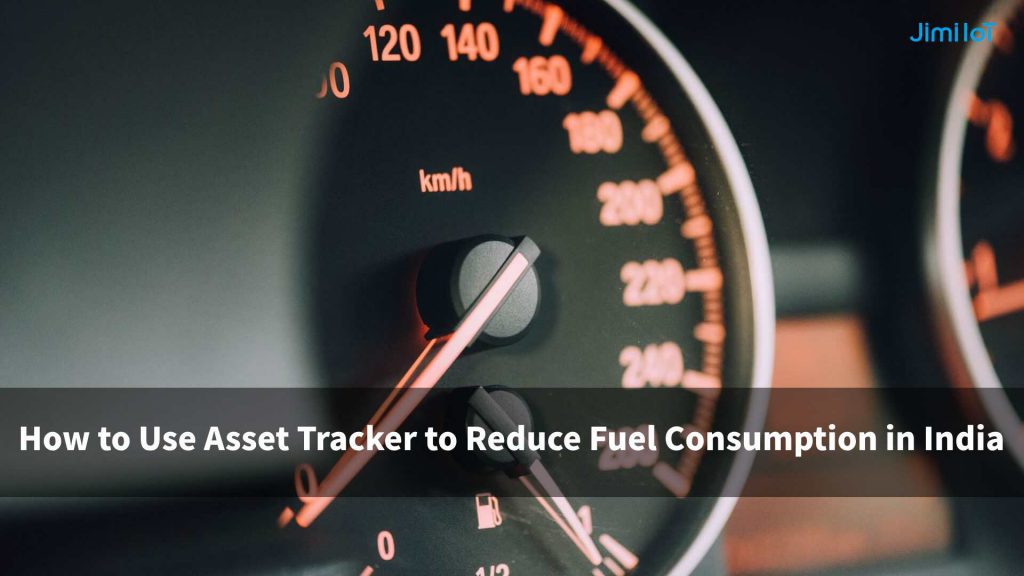India, being the world’s third-largest energy consumer, faces a significant challenge in managing its fuel consumption. With an ever-growing population and a rapidly expanding economy, the need for efficient fuel management has never been more critical. In this context, the use of an asset tracker can play a pivotal role in reducing fuel consumption. This article will delve into the different ways an asset tracker can be employed to mitigate fuel usage and explore some successful application cases in India.

The Indian Scenario: A Statistical Overview
According to the Ministry of Petroleum and Natural Gas, India’s total consumption of petroleum products stood at around 215.24 million tons in 2020-21. The transport sector, including road, rail, air, and water, accounts for about 40% of the total energy consumption in the country. Within this sector, road transportation is the primary fuel consumer, with diesel and petrol accounting for approximately 70% of the total consumption.
The International Energy Agency (IEA) reports that India’s oil demand is expected to grow at an annual rate of 3.9% until 2040. With such an exponential increase in fuel consumption, it is crucial for India to adopt strategies that can minimize the associated costs and environmental impacts.
The Role of Asset Trackers in Reducing Fuel Consumption
An asset tracker is a sophisticated technology that enables businesses and individuals to monitor and manage their assets, including vehicles, equipment, and personnel. By utilizing GPS tracking, telematics, and data analytics, asset trackers can provide valuable insights into the efficiency of a fleet or an individual vehicle, thereby helping to identify and address fuel wastage. Some of the primary ways in which asset trackers can contribute to reduced fuel consumption include:
Route Optimization
Asset trackers can analyze real-time traffic data and road conditions to determine the most efficient routes for vehicles. This enables drivers to avoid traffic congestion, reduce idling time, and minimize unnecessary detours, all of which contribute to decreased fuel consumption.
Driver Behavior Monitoring
An asset tracker can monitor driver behavior, such as speeding, harsh acceleration, and sudden braking. By identifying and addressing these inefficient driving habits, businesses can significantly reduce fuel usage and associated costs.
Predictive Maintenance
Through the continuous monitoring of vehicle performance and engine diagnostics, asset trackers can detect potential maintenance issues before they escalate. This helps to minimize downtime, prevent costly repairs, and ensure that vehicles operate at optimal efficiency, thereby reducing fuel consumption.
Idle Time Reduction
Asset trackers can provide data on vehicle idle times, allowing fleet managers to identify and address the root causes of excessive idling. Reducing idle time not only cuts down on fuel consumption but also decreases greenhouse gas emissions and extends the lifespan of vehicles.
Asset Trackers Application Cases in India
Several Indian businesses have successfully implemented asset trackers to reduce fuel consumption and improve operational efficiency. Some noteworthy examples include:
Case 1: A Leading Logistics Company
A major logistics company in India, with a fleet of over 2,000 trucks, adopted an asset tracking solution to optimize route planning and monitor driver behavior. As a result, the company saw a 12% reduction in fuel consumption, leading to an annual savings of approximately INR 15 crore (USD 2 million).
Case 2: A Renowned Taxi Aggregator
A popular taxi aggregator in India integrated an asset tracker into its platform to monitor and manage its fleet of over 10,000 vehicles. By leveraging data insights to improve driver behavior and reduce idle time, the company achieved an 8% reduction in fuel consumption, translating to annual savings of nearly INR 20 crore (USD 2.7 million).
Case 3: A Municipal Corporation
A municipal corporation in India installed asset trackers in its fleet of waste disposal vehicles to optimize routes and monitor vehicle performance. As a result, the corporation experienced a 10% decrease in fuel consumption and a 15% reduction in vehicle maintenance costs.
Why Jimi IoT?
The adoption of asset tracker technology in India has the potential to significantly reduce fuel consumption, minimize costs, and lessen the environmental impact of the transport sector. By optimizing routes, monitoring driver behavior, implementing predictive maintenance, and reducing idle time, businesses and government agencies can make substantial progress toward a more sustainable and efficient future. As India’s economy continues to grow, leveraging asset trackers will be crucial to ensuring the responsible management of its fuel resources.
Jimi IoT relies on innovative solutions for driver status monitoring and vehicle tracking for fleet management, more effective driver tracking, recording, notification, monitoring and efficient fleet management.
Jimi has more than 20+ years of experience in the loT/loV industry and a team of experts to assist you in the adoption. We offer ready-todeploy solutions (with IoT SIM cards for worldwide connectivity) as well as OEM, ODM.and OBM services to suit your industry-specific needs. Contact us at info@jimilab.com
 EN
EN ES
ES PT
PT TH
TH VN
VN JP
JP



